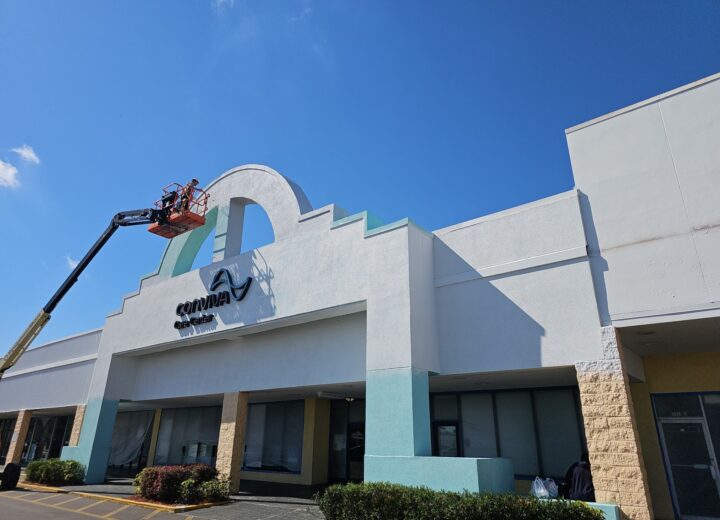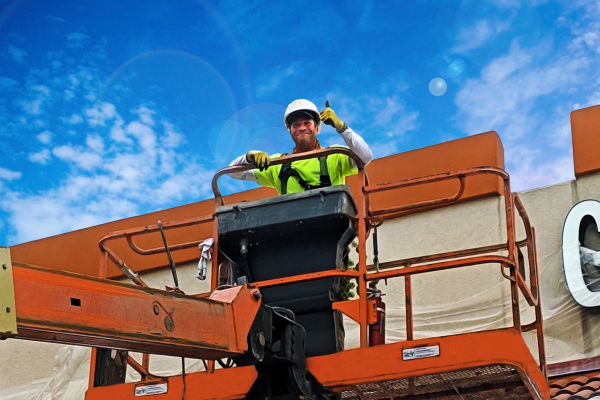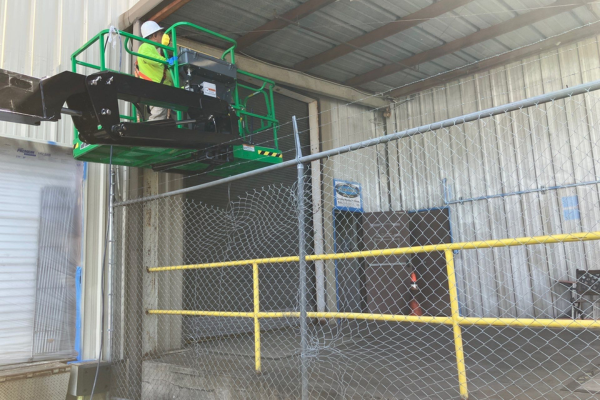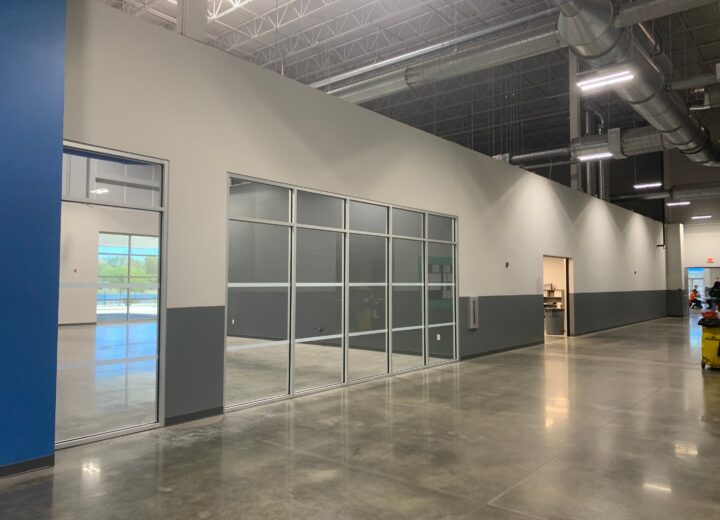Before we go through the most important factors a commercial paint contractor should consider when repairing and painting synthetic stucco, it’s very important to understand the differences between this exterior siding option and “traditional” stucco.
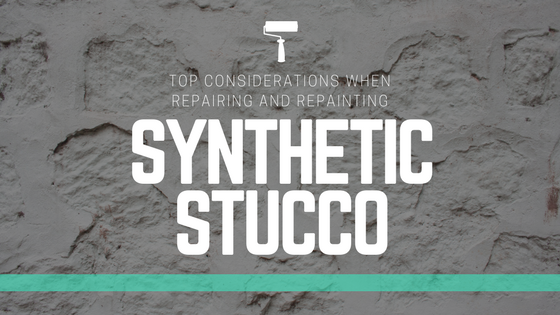
According to the Portland Cement Association, “traditional” stucco is a cladding material made from a mixture of Portland cement, sand, lime and water. On the other hand, synthetic stucco, or EIFS (exterior insulation finishing system), defines a multi-layer system composed of rigid insulation boards fastened to walls and covered with reinforcing mesh, a polymer-modified basecoat that serves as a very effective barrier against the elements, and a decorative, durable, crack-resistant finish.
Although synthetic stucco looks like traditional stucco, these two exterior cladding solutions perform differently in areas where temperatures, wind speeds and relative humidity are high.
Synthetic Stucco: Assessing the Pros and Cons
On the upside, EIFS delivers a great waterproofing solution against water penetration and moisture ingress problems that affect many commercial buildings across Florida. On the downside, a potential problem with synthetic stucco is that moisture can accumulate behind the insulation boards, with no way to escape. In a commercial building, this can cause very serious and costly problems, such as extensive water damage, fungal contamination, structural wood rot, pest infestations and even illness.
Over the years, the proliferation of synthetic stucco particularly in commercial projects has led to the development of the so-called “drainable” EIFS. These systems allow water and moisture to egress from wall assemblies, preventing most of the problems associated with synthetic stucco.
In order to preserve the intended function of “drainable” EIFS, a commercial paint contractor must make sure he doesn’t seal the drainage system when performing repairs.
While repairing cracks and holes in stucco is critical to improving the performance of the building envelope and making it impervious to the elements, sealing any intended openings may facilitate moisture accumulation and migration through wall assemblies and buildings. To prevent this from happening, any commercial paint contractor would advise extreme care to be taken when repairing synthetic stucco siding.
Also, if mold is present on stucco, the areas affected should be treated with a solution of bleach and water. Then, the entire surface should be rinsed thoroughly with clean water and allowed to dry completely before applying the paint.
On a side note, EIFS can be painted just like traditional stucco. Depending on the characteristics and appearance wanted, our professional commercial paint contractors use either top-quality acrylic latex paints or elastomeric coating systems.
After repairing and repainting synthetic stucco, regular inspection and paint maintenance are necessary in order to protect your commercial property against the harsh Florida weather, but particularly against moisture and water penetration.
Considering that water damage can be significant by the time you observe the first signs of water intrusion, hiring a knowledgeable and experienced commercial paint contractor who can help you develop and implement a proper paint maintenance program for your commercial facility is key to keeping your building looking like new for a long time.
Just like any other exterior wall cladding material, synthetic stucco can deliver fantastic curb appeal and make any commercial property stand out as long as it’s properly maintained. To find out how you can make the most of your exterior siding, please feel free to call our professional and trustworthy commercial painting contractors at (904)-641-4800 in Jacksonville or (813)-308-0388 in Tampa, Florida.

